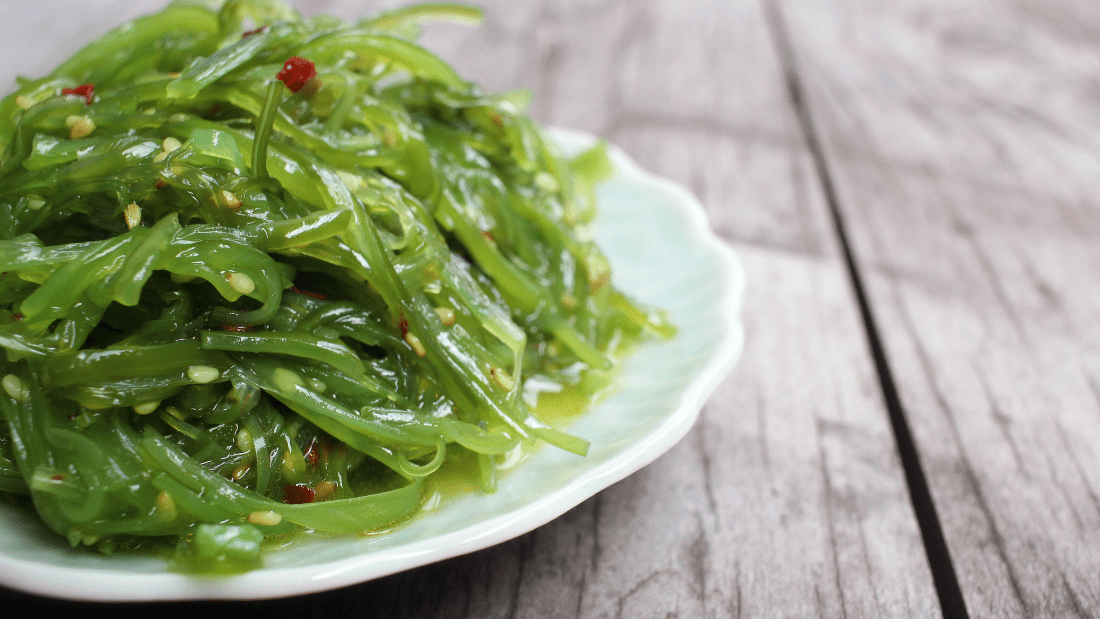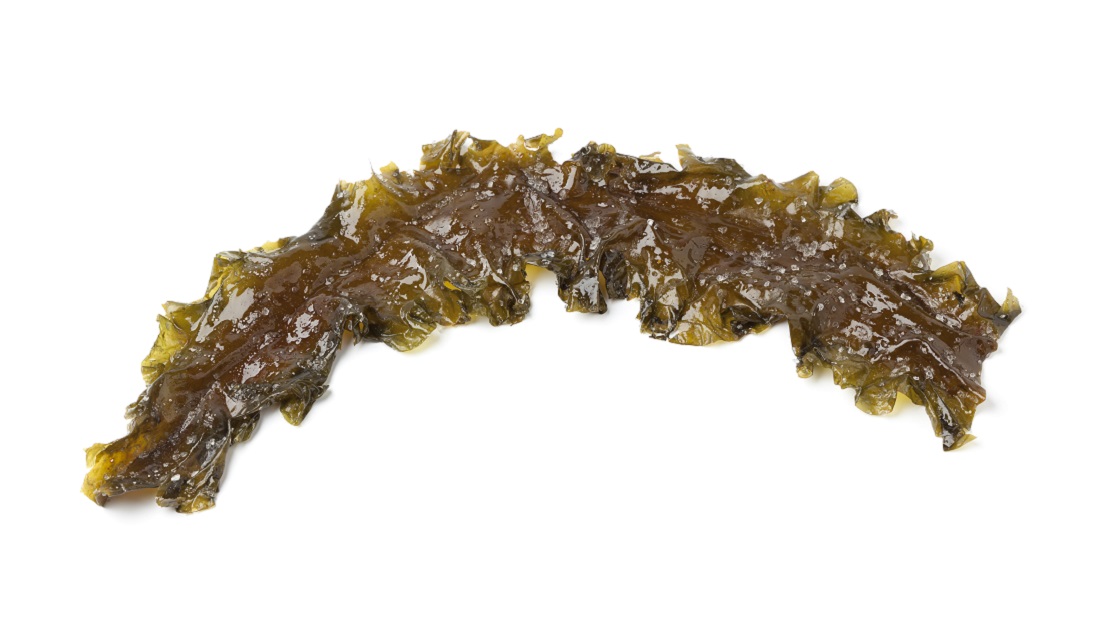Iodine

How much do you need daily?
Adults need 140 micrograms of iodine per day. Most people should be able to get all the iodine they need by eating a varied and balanced diet. Most people should be able to get all the iodine they need by eating a varied vegan diet containing some seaweed, iodised salt and fortified plant milks.
The government recommends the following intakes
| Age |
Amount of iodine recommended (micrograms per day) |
|---|---|
| 0-3 months |
50 |
| 4-12 months |
60 |
| 1-3 years |
70 |
| 4-6 years |
100 |
| 7-10 years |
110 |
| Males |
|
| 11-14 years |
130 |
| 15+ years |
140 |
| Females |
|
| 11-14 years |
130 |
| 50+ years |
140 |
| During pregnancy |
No increase required |
| Breastfeeding |
No increase required |
Are we getting enough?
According to the UK Scientific Advisory Committee on Nutrition (SACN), there is public health concern that iodine intakes have become marginally adequate or actually inadequate for particular needs, especially during adolescence, reproduction and gestation and development.
The 2018 National Diet and Nutrition Survey found low levels of iodine in nine per cent of children aged 4 to 10 years, 12 per cent of children aged 11 to 18 years, 14 per cent of adults aged 19-64 and eight per cent of adults aged 65 years and over.
Some research, including the EPIC Oxford Study, has raised concerns about the iodine status of vegans. One of these studies said vegans typically have low intakes of iodine unless they consume seaweed, fortified food, iodised salt or supplements.
Why do we need it??
Iodine is a trace element found in seawater, rocks and some types of soil. In the human body, it is essential for the production of the hormones thyroxine and triiodothyronine in the thyroid gland – these regulate how energy is produced and used up in the body. Too much or too little iodine can throw our metabolism off balance. Iodine is also necessary for the development of the nervous system and cognitive abilities in infancy and childhood.
The amount of iodine in plants depends on how much iodine is in the soil in which they grow (just as the levels in meat, chicken, eggs and dairy products reflect the amount of iodine used in the animal feed). On the other hand sea vegetables (seaweed) are always a good source as they absorb iodine from seawater. Kombu (kelp) is exceptionally rich in iodine – the highest amount of iodine in any food, so whilst seaweed consumption is encouraged, avoid kelp or use it very sparingly.
Excess iodine can disrupt thyroid function leading to weight gain, hypothyroidism or hyperthyroidism. The Department of Health advise that intakes of up to 500 micrograms a day of iodine are unlikely to cause harm.
Do I need a supplement?
A healthy vegan diet containing the above foods on a daily basis, with the regular use of sea vegetables, iodised salt (used in cooking) and fortified plant milks should cover your needs but you may need a supplement if you don’t eat these foods in sufficient quantities.
The best plant sources

Seaweed
The best plant sources of iodine are: sea vegetables (arame, wakame and nori) iodised salt and fortified plant milks. Other plant foods have varying iodine content depending on iodine levels in the soil in which they’re grown, including wholegrains, green beans, courgettes, kale, spring greens, watercress, strawberries and organic potatoes with skin. Amounts tend to be low and variable.
Many plant milks are now fortified with iodine, including oat milk from ASDA, Marks & Spencer and Oatly and soya milk from ASDA, Alpro, Marks & Spencer and Tesco etc. You can check the nutrition panel on the carton to see if a plant milk contains iodine, which is usually labelled as potassium iodide.
Signs of deficiency
Enlarged thyroid gland (goitre), tiredness, weight gain, increased susceptibility to infections, depression, feeling cold at all times and dry and cracked skin and hair loss. Deficiency can inhibit the foetal brain development.
Foods to include
| Food |
Micrograms of iodine per portion |
% of recommended daily amount (140 micrograms) |
|---|---|---|
| Instant Wakame flakes* (5g serving of dried product) |
590 |
421 |
| Kombu* (100g of stock produced with one 5-7cm strip of kombu) |
456 |
326 |
| Arame* soaked, drained and cooked (small serving 20g) |
302 |
216 |
| Nori Green Sprinkle* Sea Vegetable Condiment (2g portion) |
95 |
68 |
| Japanese Wakame* (5g washed, soaked, drained and rinsed) |
18 |
13 |
| Nori** sheet toasted (one sheet, 2.4g) |
14 |
10 |
| Iodised salt** (1.5 µg, ¼ teaspoon) use in cooking |
30 |
21 |
| Oatly Oat Milk** (200ml) |
45 |
32 |
| Plant Based by ASDA Oat Drink*** (200ml) |
72 |
51 |
| Plant Based by ASDA Unsweetened Soya*** (200ml) |
70 |
50 |
| Alpro Soya Long Life Dairy Free Original Milk Alternative** (200ml) |
45 |
32 |
| M&S Plant Kitchen Unsweetened Soya Drink**** (200ML) |
45 |
32 |
Source: *Clearspring, **Waitrose, ***ASDA, ****Ocado.
Small amounts of seaweed (especially nori, arame and wakame) are an excellent source of iodine as a part of a varied, vegan diet but should prepared following cooking instructions printed on the pack and not used in quantities exceeding the recommended portion sizes. Use the nutritional information provided on the packaging for guidance to avoid eating too much iodine.
Kombu is an edible kelp used in East Asian cuisine and can be extremely high in iodine. Avoid using kombu/kelp if you have a thyroid problem as it contains such excessively high levels. Some health bodies advise not eating seaweed more than once a week during pregnancy as it may contain too much iodine which can disrupt thyroid function.
Sea vegetables contain many other minerals and trace minerals too, including calcium, copper and magnesium. They can also be high in protein and fibre, while being low in calories and fat-free.
Use iodised salt in cooking rather than adding it to your cooked meals.
Additional information
The dairy industry try to persuade people to consume more dairy products on the basis that milk contains iodine. However, it is not a natural component of milk, it comes from iodine supplements in cattle feed and iodine-containing disinfectant used to sterilise milking equipment and added to teat dips and udder washes!
Iodine has been used clinically in the treatment of wounds for more than 170 years. Dairy cows’ udders are prone to infection (mastitis) and are routinely washed with iodine which is why some of it ends up in their milk. It is also added to animal feed and levels in milk can vary widely, especially in winter when cows are confined indoors and fed only iodine-fortified feed. There is up to 40 per cent less iodine in organic dairy products.
List of All Nutrients
This post has been categorised in: A-Z of nutrients, A-Zs, Health




